Everything You Need to Know about Keg Conversions

March 10, 2022
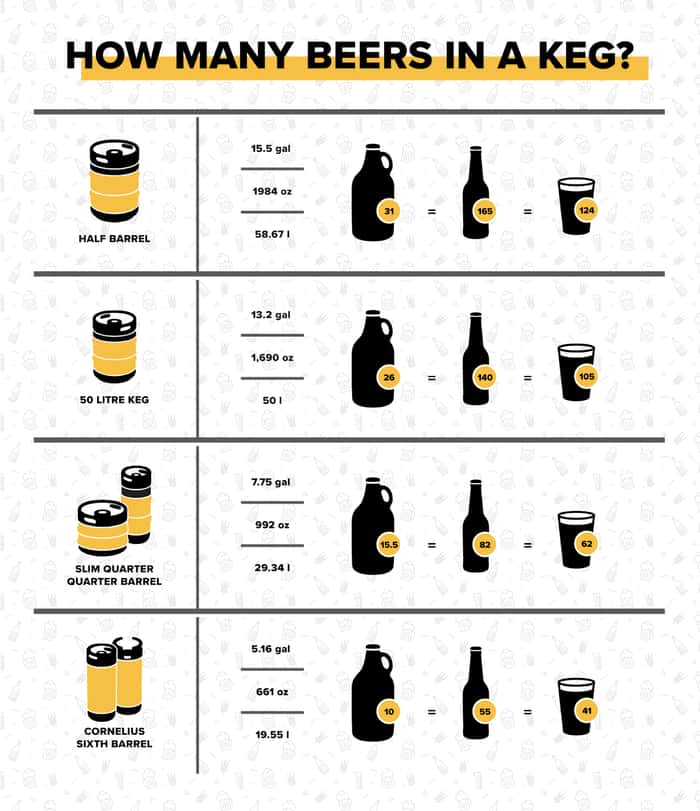
When it comes to storing and serving beer, whether for distribution or in your own taproom, there are plenty of options.
Half-barrel kegs, sixtels, quarter barrels, 50-litre kegs, and more all hold a different number of beers in different volumes—ounces, gallons, liters, pints, cans, and even growlers.
Putting it all down on paper can seem a little daunting. But it’s essential when running a brewery or bar to understand the capacity of each of these different vessels. And to also learn the different purposes and situations for each of these varying kegs.
So we did the legwork for you!
We’ll break down all the different types of kegs and when it’s best to use them. Plus, reference our handy infographic below for a quick look at how many beers go into all different sizes of kegs.
The above infographic is handy whether you’re a seasoned beverage business owner or just getting into the game. Know what else is a super helpful business tool? Our new Untappd for Business E-Book: The Ultimate Start Up Guide for Breweries in 2022. And you can download it for free. Right now!
What We’ll Cover in This Piece:
Keg Sizes and Types, And When to Use Them
As a brewery or bar owner, it’s imperative to understand the different types of kegs available to you. More than that, knowing when to use which type of keg could be the difference between ordering or making too much and the perfect amount of beer. Use the information below to make an informed decision for your beverage business.
Sixth Barrel Keg • Sixtel • 1/6 Barrel • 1/6 BBL
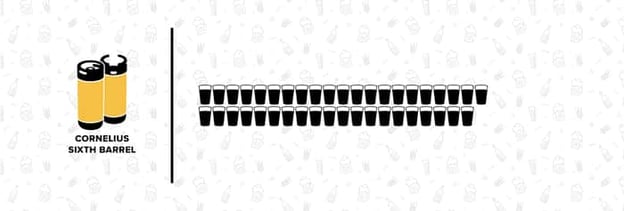
Although only slightly bigger than a Corny keg, sixtels are very popular for commercial breweries. Mainly because, a sixtel has a traditional keg valve that requires a keg coupler for dispensing (as opposed to the ball or pin-lock connection system on a Corny keg). Additionally, bars and restaurants like sixtels because they’re slimmer and easier to store, meaning it’s possible to order a bunch of smaller sixtels and offer more of a variety of beer to their customers. These barrels hold up to forty-one 16-oz pints.
PROS: Smaller and slimmer, sixtels are perfect for not only breweries, but also bars and restaurants who want to save space and serve a variety of beers.
CONS: A sixtel still only carries 41 pints, so if you’re a super high-volume operation, a standard half barrel might be the better option.
Capacity: 41 Pints (16oz) / 55 Cans or Bottles (12oz)
Dimensions: 23 ⅜” x 9 ¼”
Quarter Barrel • Pony Keg • Stuby Quarter • 1/4 BBL
Known more colloquially as the Pony Keg, the quarter barrel doesn’t see a ton of commercial use. With a 7.75-gallon capacity, these kegs are better for a small party than in a bar or restaurant. A quarter barrel could potentially be used for a very small speciality batch or to bring in something special to put on one tap. You’re much more likely to see a sixtel or half barrel in the market.
PROS: They’re perfect for small one-off batches or putting something really special on one tap to test it.
CONS: They’re small and probably won’t be a great fit for a standard brewery or bar.
Capacity: 62 Pints (16oz) / 82 Cans or Bottles (12oz)
Dimensions: 13 ⅞” x 16 ⅛”
Half-Barrel Keg • Full-Size Keg • 1/2 BBL
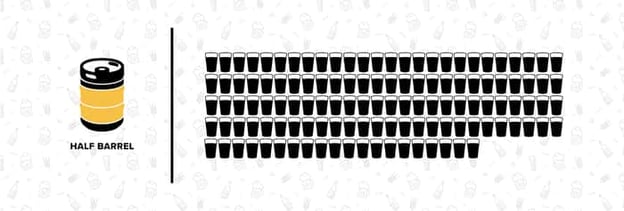
Although it’s called a half barrel, this keg is actually considered full-size in the beer industry. This is the godfather of all beer vessels. When you think of a traditional beer keg (hello, frat party), you probably picture a half-barrel keg. For years and years macrobreweries have used half-barrel kegs to distribute, and it’s the standard at most bars and restaurants as well. Our recommendation here: for beers that you know move consistently and well, order a half barrel. And for those special, more limited beers such as seasonals, specialties, or ones you simply want to test out, go with the sixtel. A half-barrel keg holds 124 16-oz pints, so it’s a big upgrade from a sixtel.
PROS: The godfather of all kegs, a half barrel holds the most amount of liquid. This is a great option for popular beers that you move consistently.
CONS: They’re huge, heavy, and hard to maneuver. If you’re a smaller establishment, it could be harder to find the space for a half barrel keg.
Capacity: 124 Pints (16oz) / 165 Cans or Bottles (12oz)
Dimensions: 16 ⅛“ x 23 ⅜“
50-Litre Keg • Import Keg • European Barrel • 50 Liter
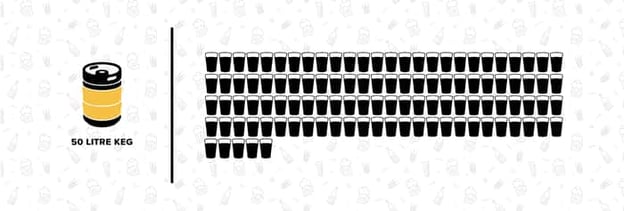
Although less common in the United States, the 50-litre keg is worth mentioning if you’re a bar or restaurant serving imported beer such as Heineken, Newcastle, Hoegaarden, Stella Artois, etc. Or, if your establishment is located in Europe. Sort of like the half barrel in the U.S., the 50-litre keg is the most common keg size in European countries, including the U.K. The most important thing to note with this type of keg is that they do not use a standard U.S. Sankey D coupler to connect to your draft system. Always make sure you ask your supplier to give you the right coupler for this type of keg!
PROS: If you’re an American bar or restaurant that wants to serve a popular import, you’ll most likely need to become familiar with the 50-litre keg.
CONS: These kegs do not use a standard U.S. Sankey D coupler. Make sure you ask your supplier for the right coupler for this keg!
Capacity: 105 Pints (16oz) / 140 Cans or Bottles (12oz)
Dimensions: 20.94” x 16.06”
Infographic - How Many Beers in a Keg?
Use this handy chart to figure out how much beer by volume or by growler, bottle, and pints you can fit into common keg sizes.
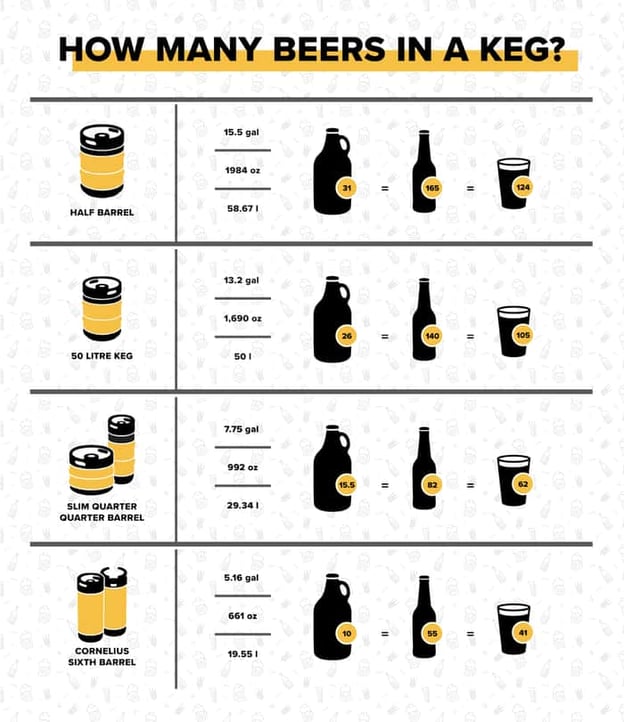
Improve Your Brewery Production
Ollie is the platform built by brewers, for brewers™. Increase brewery productivity and sell more beer. Everything you need in one place.
